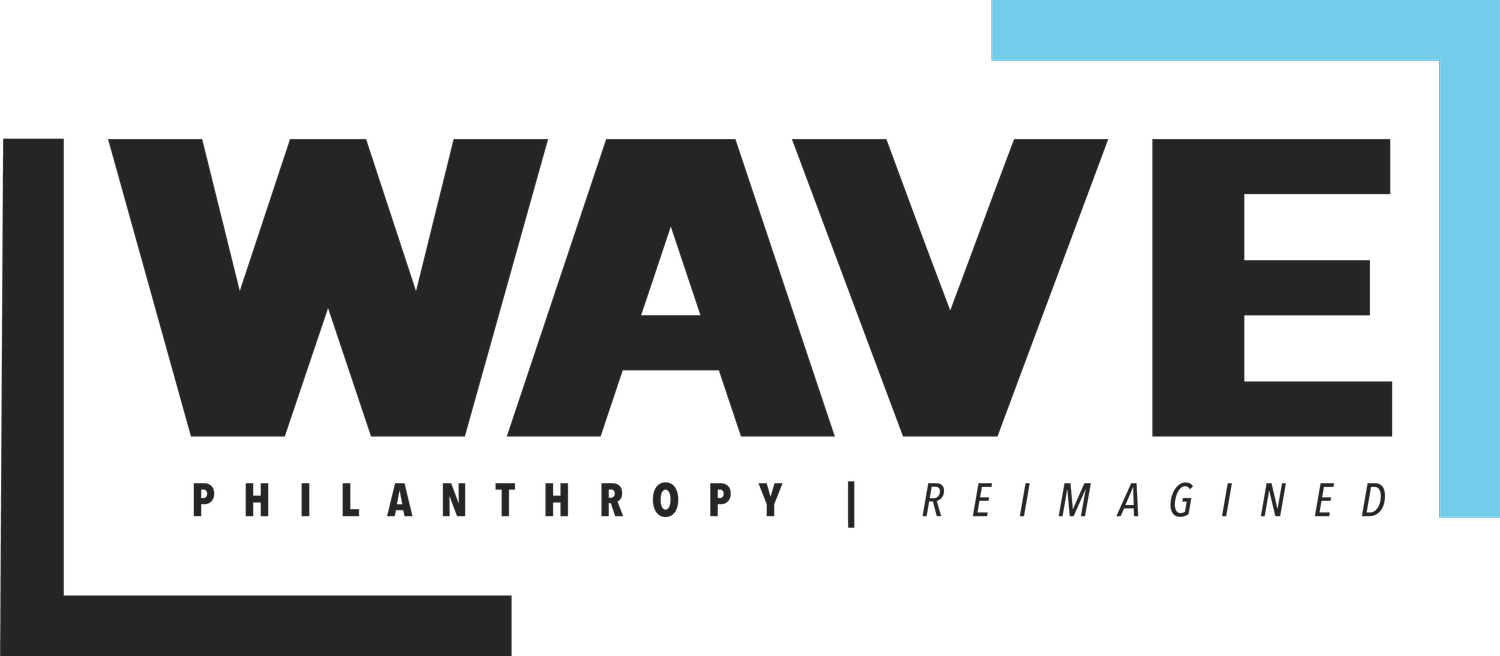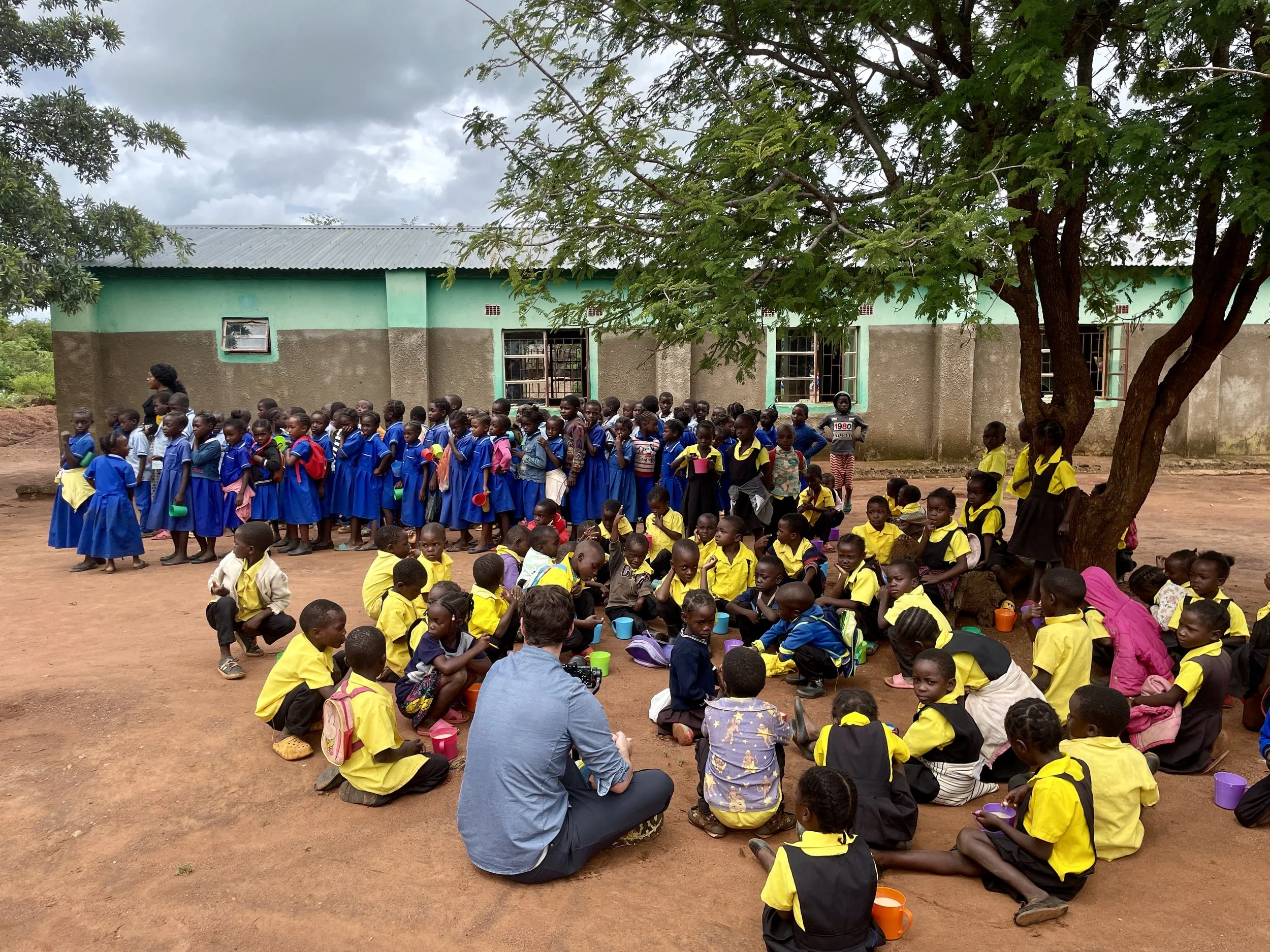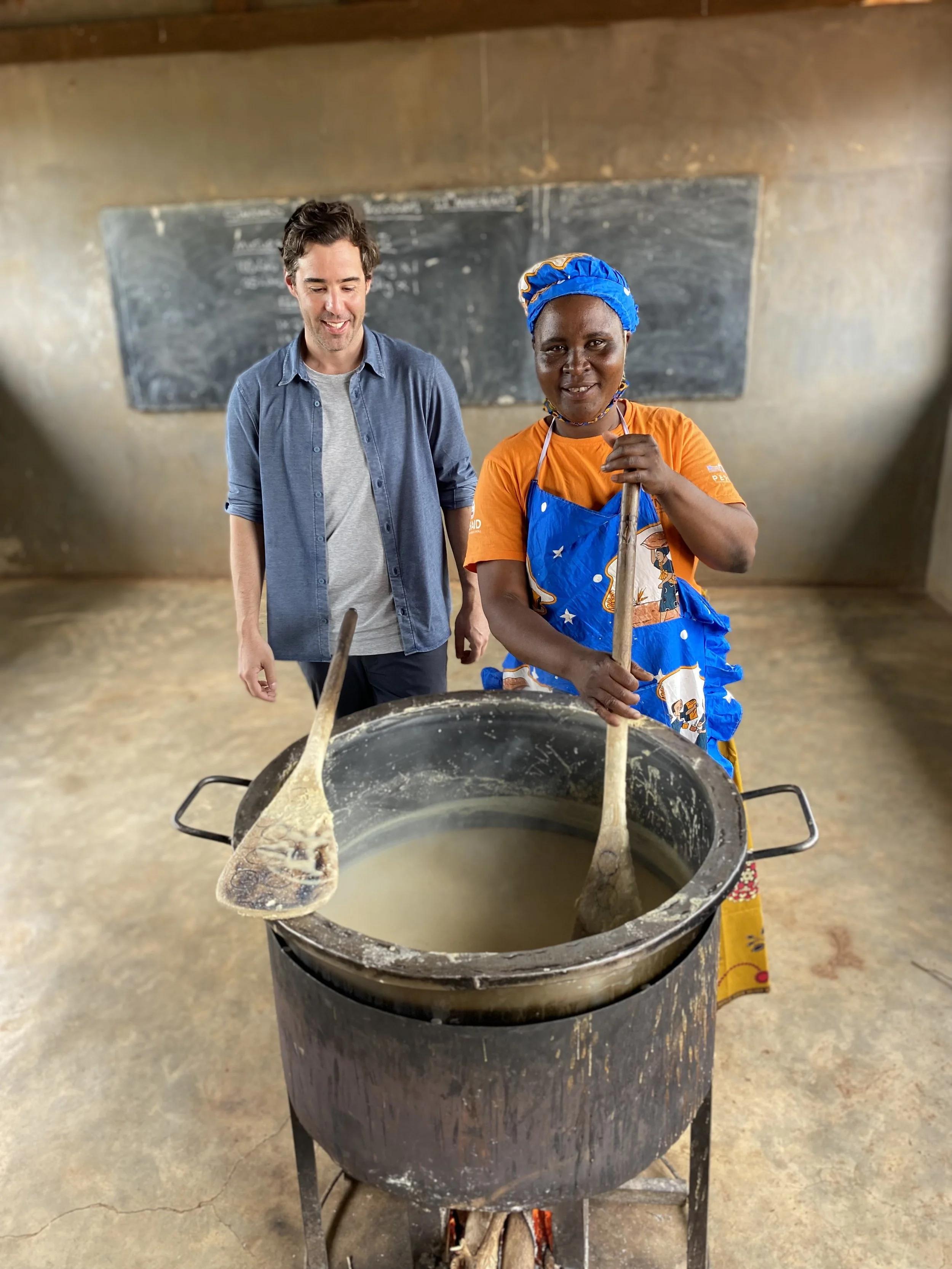Feeding the Future: What I Learned from Mary’s Meals in Africa
There are some moments in life that don’t just stay with you, they change you. For me, one of those moments happened under the African sun in a dusty schoolyard, surrounded by children holding plastic cups in their hands. One by one, they stepped forward for a scoop of porridge. To an outsider, it might have seemed ordinary, but to me it was extraordinary. That simple bowl of porridge meant so much more than food. It meant hope. It meant education. It meant the possibility of a future.
This was my introduction to Mary’s Meals.
Mary’s Meals began with one radical but beautifully simple idea: if you can provide children with one good meal every school day, in a place of education, you can break the cycle of hunger and poverty. What started in Scotland with Magnus MacFarlane-Barrow has become a global movement, feeding over two million children every day. And yet, what struck me most is that it costs less than what most of us spend on a morning coffee to feed a child for an entire year. Simplicity at its most powerful.
When I traveled to Africa to see this work firsthand, I expected hardship—and I saw it. Classrooms without windows, children without shoes, long walks to school that would humble any of us. But what I didn’t expect was the overwhelming joy. Laughter filled those same classrooms. Teachers sang while children clapped along. Mothers stirred enormous pots of porridge over open fires, smiling as they served the food. The program wasn’t just about feeding children; it was about dignity, about community, about people lifting each other up with whatever resources they had.
I sat with students as they ate, watching the difference one meal could make. Teachers told me attendance had soared since meals were introduced. Children who once stayed home or scavenged for scraps now came to school because they knew there would be something to eat. And not just eat, but learn. A child with a full stomach can focus, can absorb knowledge, can dream. That one scoop of porridge was really a scoop of possibility.
The lesson was simple: a fed child becomes an educated child, and an educated child has a chance to grow into an empowered adult who can break the cycle of poverty for themselves and their families. One meal leads to one education, which leads to one future. It’s a straight line, and it works.
Being there, watching it unfold, reminded me that philanthropy is at its best when it is uncomplicated and human. Too often, giving becomes transactional: cheques written, receipts filed away, line items on a tax return. But standing in that schoolyard, I knew that real philanthropy should move us, challenge us, and create stories we never forget. That’s why I immerse myself in organizations like Mary’s Meals, and why I bring clients into these experiences whenever possible. Because you can’t truly understand the impact of generosity until you’ve seen it, touched it, and felt it with your own eyes and hands.
Mary’s Meals reminded me that philanthropy doesn’t need to be flashy to be transformative. It doesn’t require grand buildings, complex strategies, or shiny campaigns. Sometimes, it only takes a bowl of porridge to change a child’s life—and by extension, the world.
kzb


